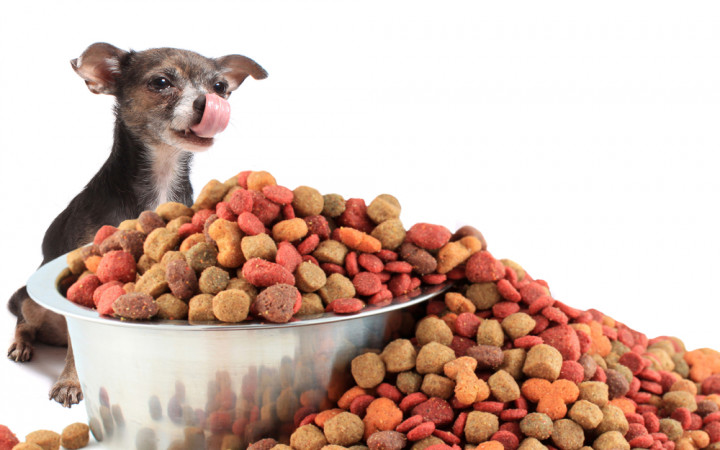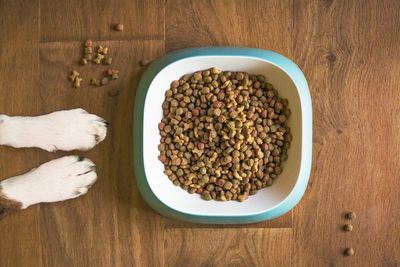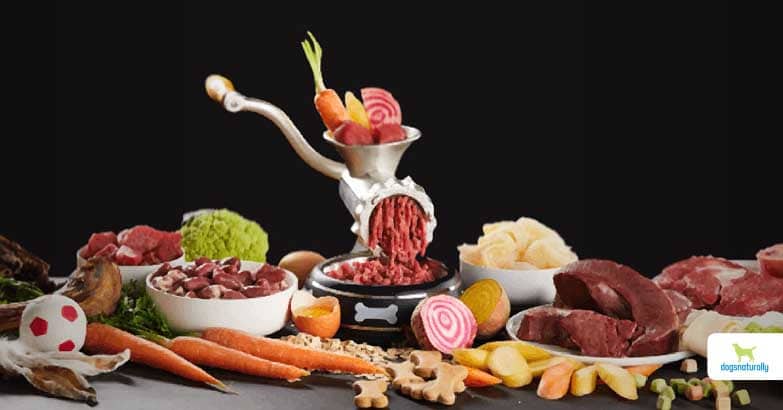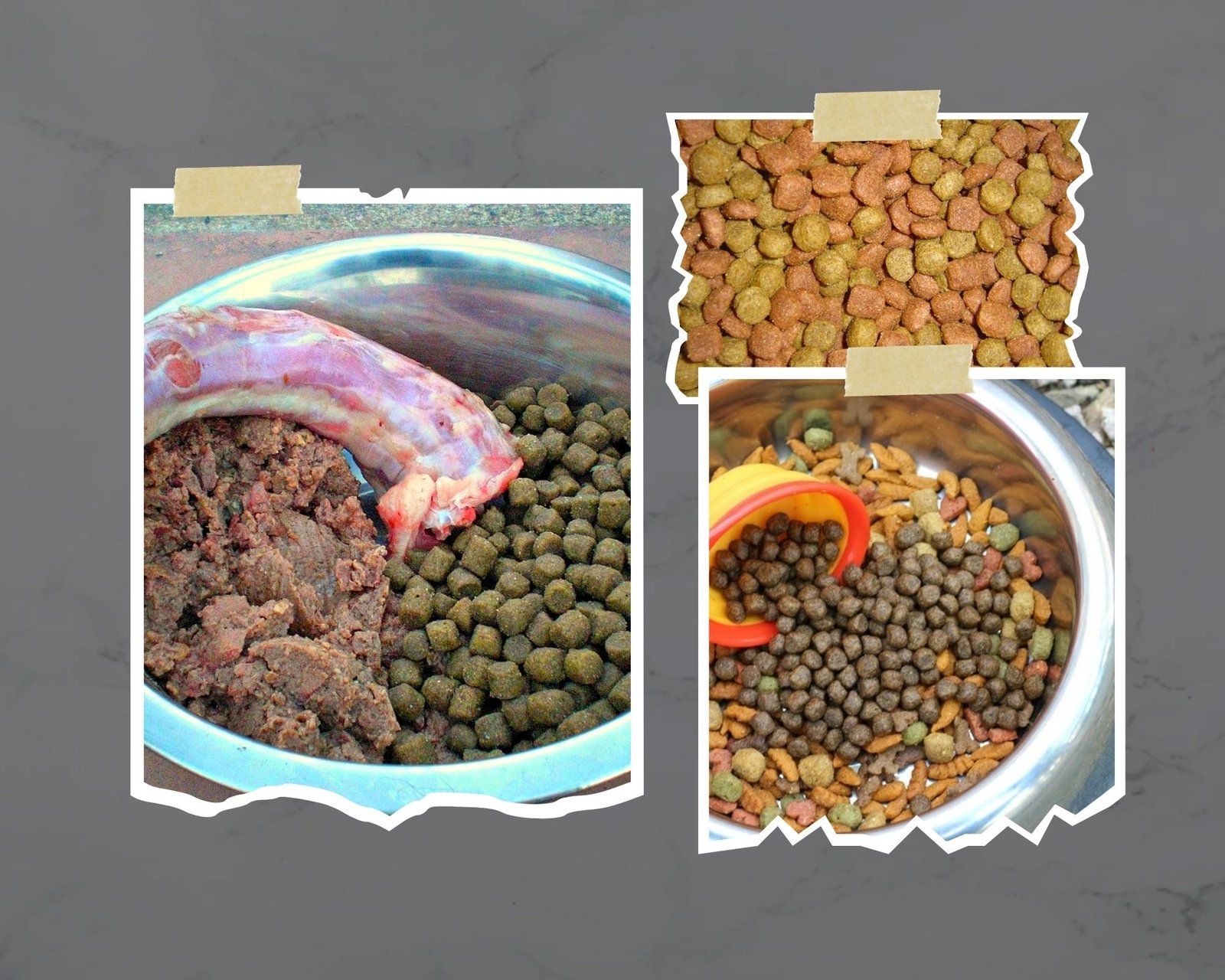Find out What is Dog Food Made of Dog food is typically made of a combination of meat, grains, fruits, vegetables, and added vitamins and minerals to provide a well-balanced diet for dogs. The specific ingredients can vary depending on the brand and the type of dog food (dry, wet, raw, etc.)
However, animal-based proteins and complex carbohydrates are commonly used. Dog food is carefully formulated to meet dogs’ nutritional needs, providing essential nutrients such as protein, fats, carbohydrates, vitamins, and minerals. Pet owners should select high-quality dog food that suits their dog’s age, size, and specific dietary requirements.
Understanding the ingredients in dog food is crucial for making informed choices about the best diet for your furry friend’s health and well-being. We will delve deeper into the critical components of dog food and their roles in maintaining a dog’s overall health.
What is Dog Food Made of? Read the full post to learn more about

Credit: www.wonderopolis.org
The Basics Of Dog Food
Dog food is the primary source of nutrition for our beloved canine companions. Understanding the basics of dog food is essential to ensuring our furry friends live healthy and happy lives. This section will explore two crucial aspects: understanding their nutritional needs and the regulations and labeling requirements in the pet food industry.
Understanding Nutritional Needs
Different from human nutrition, dogs have different needs. It is crucial to provide them with a balanced diet that meets their needs. A well-rounded canine diet typically consists of the following:
- Proteins: Dogs require high-quality proteins to support muscle growth and repair. Look for ingredients like chicken, beef, lamb, or fish in your dog’s food. These proteins help support their energy levels and overall health.
- Carbohydrates: While some carbohydrates are necessary for energy, it is essential to choose complex carbohydrates, such as whole grains and vegetables, over simple sugars and refined grains. Complex carbohydrates provide valuable nutrients and support digestion.
- Fats: Fats are an excellent energy source and help with nutrient absorption. Including healthy fats from sources like fish or flaxseed can benefit your dog’s skin and coat health.
- Vitamins and Minerals: Dogs require a variety of vitamins and minerals to support their overall well-being. Look for dog foods that include essential vitamins and minerals, such as vitamins A, D, calcium, and iron.
Regulations And Labeling
The pet food industry is regulated to uphold quality and safety standards. Familiarizing yourself with the regulations and understanding food labeling is essential when choosing the right dog food for your pet. Here are some key points to consider:
- Association of American Feed Control Officials (AAFCO): The AAFCO sets guidelines for pet food manufacturers, including ingredient and nutritional requirements. Look for dog food labeled “complete and balanced,” as it means it meets the AAFCO’s standards.
- Ingredients List: The list of ingredients provides valuable information about the composition of dog food. Since the elements are listed in decreasing weight order, high-quality protein sources should be the first few on the list.
- Nutritional Adequacy Statement: This statement on the packaging indicates if the dog food is suitable for a specific life stage, such as “for puppies” or “for adult dogs.” Pay attention to this statement to ensure the food meets your dog’s needs.
- Feeding Guidelines: Feeding guidelines help you determine the appropriate portion sizes for your dog based on their weight and age. It is important to follow these guidelines to prevent overfeeding or undernourishment.
Understanding the nutritional needs of your dog and the regulations surrounding dog food can help you make informed choices when selecting the best food for your canine companion. By providing a balanced, nutritious diet, you are taking a vital step toward keeping your dog healthy and thriving.
What is Dog Food Made of? Click here for more details on this topic: Click here
Common Ingredients In Dog Food
Dog food commonly contains a blend of meat, grains, and vegetables to provide the necessary nutrients for your pet’s well-being. Many dog foods also include added vitamins and minerals to ensure a balanced diet. Reading the labels and choosing high-quality ingredients for your furry friend’s health is essential.
Humans are not the only ones who need a balanced diet. Dogs, our faithful companions, also require proper nutrition to thrive. One crucial aspect of a dog’s diet is the ingredients found in their food. Understanding the common ingredients in dog food can help you make informed choices when selecting the best food for your furry friend.
Animal-based Ingredients
Dog food often contains animal-based ingredients that are essential for dogs’ health. These ingredients may include chicken, beef, fish, and lamb. Proteins are crucial for muscle development and overall growth in dogs.
Plant-based Ingredients
In addition to animal-based ingredients, dog food also contains plant-based ingredients. These can include rice, oats, barley, and sweet potatoes. These ingredients provide dogs with essential carbohydrates and fiber for energy and digestion.
Understanding the common ingredients in dog food ensures your furry companion receives the nutrition they needs to lead a healthy and happy life.
Controversial Ingredients To Watch Out For
Regarding dog food, it’s essential to be aware of the ingredients potentially harmful to your furry friend. Some dog food manufacturers use controversial ingredients that may not provide the best nutritional value and could pose health risks. In this section, we’ll look closer at two ingredients: fillers, by-products, and artificial additives.
Fillers And By-products
Fillers are ingredients that bulk up dog food without offering significant nutritional benefits. They are often inexpensive and can make the product seem more substantial. However, fillers like corn, wheat, and soy can be problematic for dogs to digest and may contribute to allergies or sensitivities. On the other hand, by-products refer to ingredients derived from animal parts not used for human consumption, such as organs, bones, or blood. These by-products may lack the quality and nutrient content found in whole meats, potentially leading to an unbalanced diet for your pet.
Artificial Additives
Artificial additives are substances added to dog food to enhance flavor, color, or texture. While they may improve the palatability of the food, they can also negatively affect your dog’s health. Artificial additives include artificial preservatives (like BHA, BHT, and ethoxyquin), artificial flavors, and artificial colors. These additives have been linked to various health issues in dogs, including allergies, gastrointestinal problems, and even organ damage.
When selecting dog food for your beloved pet, it’s essential to read the ingredient list carefully. Avoid fillers, by-products, and artificial additives, as these can harm your dog’s health. Look for high-quality dog foods that prioritize real meat as the primary ingredient and avoid unnecessary synthetic additives. Providing your furry friend with a nutritionally balanced diet is crucial for their well-being.
What is Dog Food Made of? Also, click here to learn more about dog food: click here
Understanding The Importance Of Quality
The quality of our canine companions’ diets plays a crucial role in their health and well-being. Providing your dog with nutritious, high-quality food is essential for their overall health and longevity. In this section, we will explore the impact of food quality on your dog’s health and provide tips on choosing the right food for your furry friend.
Impact On Dog’s Health
What we feed our dogs directly affects their health and vitality. A diet consisting of low-quality or inappropriate ingredients can lead to various health issues such as obesity, digestive problems, allergies, and even shortened lifespan. On the other hand, opting for high-quality dog food can have numerous benefits:
- Optimal Nutritional Value: High-quality dog food is formulated to provide a balanced blend of essential nutrients, vitamins, and minerals necessary for your dog’s overall well-being.
- Improved Digestion: Quality dog food contains easily digestible ingredients, which helps avoid digestive issues and ensures your dog receives maximum nutrient absorption.
- Healthy Weight Maintenance: A well-balanced diet with appropriate calories can help prevent obesity and associated health problems.
- Healthy Skin and Coat: Quality dog food often contains ingredients rich in omega-3 fatty acids, which promote healthy skin, a shiny coat, and reduce the risk of skin allergies.
Choosing The Right Food
Now that you understand the vital role of quality dog food, it’s essential to know how to choose the right one for your furry friend. Here are some factors to consider:
- Read the Ingredients Label: Take a closer look at the ingredients list. Find high-quality protein sources like meat, fish, or poultry listed as the main ingredient.
- Avoid Fillers and Artificial Additives: Avoid dog foods that contain excessive fillers, artificial preservatives, colors, or flavors. These additives may be harmful or cause allergies in some dogs.
- Consider Your Dog’s Specific Needs: Different breeds, sizes, and ages have varying dietary requirements. Select dog food that is formulated to meet your dog’s unique requirements.
- Consult with Your Veterinarian: If you’re unsure which dog food to choose, it’s always a good idea to consult your veterinarian. They can provide valuable guidance based on your dog’s unique needs and health condition.
By prioritizing the quality of your dog’s food and making informed choices, you can ensure that your furry friend receives the nutrition they need to thrive and live a happy and healthy life.
Special Dietary Considerations
When selecting dog food, special dietary needs must be considered. Grain-free and limited-redient diets, as well as Raw and Homemade Options, cater to different requirements.
Grain-free And Limited Ingredient Diets
Grain-free dog food is suitable for pets with sensitivity to grains. These diets often include alternative sources of carbohydrates such as sweet potatoes or peas.
A Limited-ingredient diet utilizes a few ingredients to reduce the risk of allergic reactions in dogs that are prone to food sensitivities.
Raw And Homemade Options
Raw Diets consist of uncooked meats, organs, and bones, mimicking a dog’s ancestral diet. Homemade options give pet owners full control over ingredients and quality.
Investigating The Manufacturing Process
Dog food manufacturing involves a precise and stringent process to ensure the production of high-quality and safe products for our furry friends. Let’s delve into the various aspects of the manufacturing process, from raw materials to the implementation of quality control measures and safety standards.
From Raw Materials To Finished Product
Manufacturing dog food involves selecting high-quality raw materials, including meat, grains, vegetables, and essential nutrients. These ingredients are carefully sourced to meet nutritional requirements and are then processed to create various formulations such as kibble, canned, or
raw food.
The raw materials undergo rigorous testing to ensure their quality and safety, as contamination could harm pets. Once approved, these materials are carefully measured and mixed according to precise formulations to create the final product. The mixture is then cooked, dried, and shaped to produce the specific type of dog food.
Quality Control And Safety Measures
Throughout the manufacturing process, stringent quality control measures are implemented to monitor the various stages of production. This includes routine testing of raw materials, regular equipment maintenance, and constant monitoring of the cooking and packaging processes. Any deviations from the set standards trigger immediate corrective actions to uphold the quality of the final product.
Mandatory safety measures ensure the product’s safety for consumption. These include temperature and pressure controls during cooking and stringent hygiene practices to prevent contamination. Additionally, reputable dog food manufacturers adhere to industry regulations and standards to guarantee their products’ safety and nutritional value.
Ethical And Environmental Concerns
Addressing the ethical and environmental concerns associated with pet food production is crucial. Understanding sustainable sourcing and assessing the waste and environmental impact of dog food is imperative for conscientious pet owners.
Sustainable Sourcing
The sustainable sourcing of ingredients for dog food is an essential consideration. This involves ensuring the raw materials are procured in a manner that preserves the environment and supports local communities. It’s vital to opt for dog food made from ethically sourced proteins, such as responsibly caught fish or humanely raised meat from local farms.
Waste And Environmental Impact
Assessing the waste and environmental impact of dog food production involves examining the product’s packaging, transportation, and overall carbon footprint. Look for dog food brands that prioritize eco-friendly packaging and employ energy-efficient manufacturing processes. Additionally, consider the implications of by-products and waste generated during production.

Credit: www.ukpetfood.org
Final Thoughts On Dog Food Ingredients
When it comes to choosing dog food, understanding the ingredients is crucial. By knowing what goes into your dog’s food, you can ensure they get the nutrients they need and avoid any potentially harmful ingredients. In this final section, we will explore the key factors to consider when balancing costs and quality of dog food ingredients and the importance of continuous learning and awareness.
Balancing Costs And Quality
When selecting dog food, it’s essential to balance costs and quality. While it may be tempting to opt for cheaper options, compromising the quality of ingredients can negatively affect your furry friend’s health. It’s worth investing in dog food that meets their nutritional requirements and contains no harmful additives or fillers.
To ensure you are getting the best value for your money, consider comparing different brands based on factors such as:
- Nutritional content: Look for dog food that provides a balanced blend of protein, fats, carbohydrates, vitamins, and minerals necessary for your dog’s well-being.
- Ingredient sourcing: Seek dog food brands that use high-quality, ethically sourced ingredients to provide optimal nutrition for your pet.
- Reviews and recommendations: Consider reviews and recommendations from other pet owners or consult with your veterinarian to identify trustworthy brands.
Continuous Learning And Awareness
Staying informed about dog food ingredients ensures their overall health and well-being. With advancements in veterinary research and new findings emerging, continuously updating your knowledge on safe and healthy ingredients is crucial.
One way to stay informed is to attend webinars and workshops or consult with a trusted veterinarian. Additionally, several reliable online resources and publications dedicated to educational material on dog food ingredients can help you make informed choices.
Watching for recalls or safety alerts related to dog food is also an important step in ensuring your dog’s safety. Stay aware of any developments in the industry to make the most suitable choices for your furry friend.

Credit: www.dogsnaturallymagazine.com
What is Dog Food Made of Take a look at the questions below to know more about what
Frequently Asked Questions
What is Dog Food Made of?
Dog food is typically made of a combination of meat, grains, fruits, vegetables, and added vitamins and minerals to provide a well-balanced diet for dogs. The specific ingredients can vary depending on the brand and the type of dog food (dry, wet, raw, etc.)
What Is The Main Ingredient In Dog Food?
The main ingredient in dog food is typically meat, such as chicken, beef, or fish. It provides essential protein and nutrients for your pet’s health.
What Kind Of Meat Is Dog Food Made Of?
Dog food is typically made of meat, such as beef, chicken, turkey, and lamb. These proteins are essential for dogs’ health and provide necessary nutrients.
Is Dog Food Still Made From Horses?
No, horses are not used to make dog food.
What Constitutes Dog Food’s Top 3 Ingredients?
The top 3 ingredients in dog food should be high-quality protein, whole grains, and healthy fats. These ingredients provide essential nutrients for your dog’s overall health and well-being.
Conclusion
As you know the key ingredients in dog food, choose wisely for your furry friend’s health and well-being. Understanding the components will help you make informed decisions for your beloved pet. Remember, quality ingredients lead to a happier and healthier pup.
What is Dog Food Made of? Why do you need to know about click here
Choose wisely!

Hello I am Farhana I have been doing research on dogs since last 10 years. I have been doing research on dog special parts or dog food since last 10 years. I have gained knowledge about my dog in these ten years so. I want to blog about it daily.

